Woodhall Spa aims to conquer the world
Published: Last updated:
After undergoing one of golf’s most comprehensive restoration projects, is the Hotchkin course at Woodhall Spa Golf Club ready to return to the upper echelons of the world’s Top 100 rankings?
We visited rural Lincolnshire to discuss Tom Doak’s impact on the project, discover why the club felled 10,000 mature trees and find out whether the changes to one of Britain’s premier heathland layouts have been well received.
RELATED: Golf World Top 100: The best golf courses in England

Of all the elements that go together to make up a golf course, possibly the most emotive is its trees. Most golfers are of course lovers of nature, and by extension of trees. They are alive, they are beautiful and they have probably been part of the golf club a lot longer than we have, which gives them a status close to untouchable.
Then there are more practical considerations. Trees frame the hole, helping us find our way – as anyone who has felt the disorienting effects of a treeless links can attest; they limit the chances of being smacked on the noggin by an errant shot from an adjacent fairway; they block out scoundrels who have the effrontery to be on our course when we want it to ourselves; they even kick our wild hooks and slices back to the fairway. Well OK, it has been known.
RELATED: Europe’s best new course since Kingsbarns
As a consequence, unless a tree is diseased or being regularly clobbered by the club captain, it tends to be left alone. But unfortunately, it’s not that simple. The problem is that trees have this dreadful habit of growing; and in places where landscapes and timber do not mix very well, it creates issues.
Consider heathland layouts. According to the folks who measure these things, the UK has only 20-25 per cent of the heathland it possessed in 1800, and the number-one reason for this startling decline is encroaching flora. Once trees get their roots into the sandy subsoils that typically support lowland heath, the very nature of the land changes. The heather, lichens and gorse stop growing and its delicate ecosystem, so valued in supporting threatened species like adders and nightjars, begins to break down. Heathland reverts back to its original, ancient woodland state… and remarkably quickly.
All this may not have been at the top of Harry Colt’s thoughts when he called trees “a fluky and obnoxious form of hazard”, but it certainly was at the forefront of discussions when Woodhall Spa GC’s strategic body, Woodhall Spa Golf Management, got together in 2014 to discuss making improvements to its epic Hotchkin course. Having reached a high of 26 in Golf magazine’s ranking of the world’s best courses in 1985, it had slid to 70 – and the course’s increasingly forested nature was singled out.

“Aerial photographs taken in the 1960s clearly show that apart from plantations around the edge of the site, there wasn’t a tree to be seen on this golf course,” says the club’s general manager Richard Latham.
“It was pure, raw, open heathland. But after 50 years of what one architect described as ‘benign neglect’, this course had changed. On many fairways golfers were hitting through narrow, forested corridors.
“Hazards were becoming lost as the trees began to colonise the site, and the challenge was becoming compromised. You know your golf course is not playing correctly when you’re standing on a tee and picking a line around trees that were not there in its original design.”
Also ringing in Latham’s ears were the regular Maydays of Natural England, who had awarded this precious heathland Site of Special Scientific Interest status. Twenty feet deep in places, Woodhall Spa’s rich sand seam was dumped here by glaciers receding at the end of the last ice age, and is an anomaly in a county of boulder clay. “They were constantly telling us we were going to lose it all,” he recalls.
Such considerations formed the basis for a genuinely gutsy decision by the club to fell upwards of 10,000 magnificent oaks, pines and silver birch as part of a three-year, three-phase plan to give the course back its rightful landscape, its original character and a world ranking worthy of this special site and layout. “I adore trees,” Latham adds. “While the work was going on I would walk over the course to my office with tears in my eyes. But I have never doubted the correctness of our decision… and now the process has ended, we are seeing the value of it.”
RELATED: Why Royal Norwich Golf Club is the blueprint for the future
The rise of Woodhall Spa Golf Club
The proud if somewhat remote home of governing body England Golf since 1995, Woodhall Spa has witnessed golf since 1890. Its early nine-holers, no longer in existence, brought the game to the attention of local landowner Stafford Vere Hotchkin; and after seeing those early courses shunted around to make room for an expanding town, he offered to site a third course – this time 18 holes – on his own land. Designed by Harry Vardon, it opened in 1905.
This was, though, a precarious time to be building golf courses. Just three years earlier, the rubber-cored Haskell ball had added 25 yards to drives overnight, though Vardon himself hung on to the obsolete ‘gutty’ longer than most. Further, fresh ideas on ‘strategic’ design – pioneered by a new breed of architecture specialists like Harry Colt and Alister MacKenzie – were superseding the ‘penal’ styles of the professional old guard, whose hazards were positioned to catch tops and wides. So just six years later, Colt himself was brought in to update the course.

While the specifics of what he altered remain elusive, contemporary reports suggest he changed the routing, added greenside mounding and undulation, repositioned bunkers to create a more versatile, tactical test and increased the overall yardage. These works formed the basis of the course we see today.
That said, Hotchkin himself took over the running of the club in 1919 after it ran into post-war financial difficulties. This gave him licence to tinker with the course if he saw fit – which, as a keen student of golf course architecture, he frequently did.
“That’s OK if you know what you are doing,” Latham continues. “Fortunately, Stafford did. He believed a course should conform to its natural surroundings, and had a keen eye both for strategy and aesthetics.
“Indeed there is plenty of evidence to suggest he improved Colt’s layout over the years; he took the 3rd green 30 yards back and sited it on top of a plateau to create a stunning level site; he built up the 4th green too, developing an impressive complex. He made the challenge more interesting, and more intense.”
RELATED: Phil Kenyon saves you six shots per round
It was, however, another of Hotchkin’s design tenets – that bunkers should be bold where possible – that would ultimately create problems for his beloved course.
“Just before Stafford died in 1953, he handed control of the club to his son, Neil,” says Latham. “It seems possible that Neil, in trying to stay faithful to the ideals of his father, interpreted ‘bold’ as ‘deep’. Stafford’s bunkers were sizeable but not especially deep, but in more recent years they got deeper and deeper.
“The bunker to the left of the par-3 12th got to 12ft deep, and several others weren’t far behind; in fact one bunker on the 4th managed to snare a Hillman Imp in the 1970s. If you make a bunker deeper, you have to rework the landscaping around it to get the right falls, and this wasn’t done as well as it could have been.
“We ended up with some very narrow zones at the bottom, and you had to be extraordinarily skilled to get the ball up and out.”

The club began to experience issues with collapsing bunker banks. The increasing amount of shade created by the trees was affecting growth, and playing surface quality. Against the backdrop of a steadily falling world ranking, the club began to realise that despite the sustained popularity of the course, it was papering over cracks. The time had come for bold and decisive action.
RELATED: World Handicap System Explained
The Tom Doak effect
If you want to make a golf course more challenging, do you make its greens bigger or smaller? The correct answer is, believe it or not, the former.
‘Bigger greens’ was one of Tom Doak’s key recommendations for the Hotchkin, after Woodhall Spa chose the leading American architect to execute a three-year, three phase improvement program. Now a total of 4,000sqm larger, they take the greenstaff an extra two hours to mow every morning. But they also offer a raft of new, tucked pin positions that fire more value and variety into the ideal line in, protect par against the modern power game and ultimately ask more searching questions of the approaching golfer.
Doak was a wise choice. Though perhaps best known for original creations at Bandon Dunes, Streamsong and Cape Kidnappers, he has proved himself a skilled and sensitive course reworker. Royal Melbourne, Pasatiempo and Cherry Hills are among the prized venues that have benefited from his touch. A minimalist at heart, Doak’s gift lies in exploiting the natural landscape to unlock interesting options for the golfer, whether safe or seductive.
His approach was the perfect fit for Woodhall Spa’s Janus-like vision of a modern challenge, intensified and future-proofed, played out across a landscape returned to its raw, rustic heathland origins. Even better was the fact Doak employs perhaps the most skilful landshaping team in the business, something the Hotchkin’s misshapen, abysmal sand traps badly needed.
RELATED: Strategy lessons from the world’s best players
Instinctively resolved to offer the golfer options, Doak immediately grasped the problem with the trees. “As they encroached, it became increasingly important to play straight shots, rather than concentrating on the angle of attack,” he said in 2016, as the project was getting underway. “There used to be more strategy here, the angle of the second shot was more important, and we are trying to get some of that back. The removal of trees and scrub will not only open up the course but also put a renewed emphasis on strategy for the players.”

“The perfect example of what Tom Doak did to the course was at the 7th,” says Latham. “This is a tough par 4 of some 440 yards, dog-legging right around trees, bunkers and heather. Tom wanted to take out the trees on the right. I thought it would just make the hole easier. ‘Where do you drive it here?’ he asked. Everyone hits it up the left because in truth it’s the only option. ‘Well,’ said Tom, ‘If we take those trees out it will encourage golfers to try to cut the corner.’
“It was an inspired idea that delivered a tee shot option while bringing the bunkers and heather up the right into play. So far from making the hole easier, it has made it harder. It normally plays the 5th or 6th hardest in relation to par, but at the recent Brabazon Trophy it was second-hardest.”
RELATED: Five steps to better bunker shots
Doak performed a similar trick on the short par-4 10th, taking trees out to encourage golfers to go for the green. The intense tree-felling allowed him to widen fairways, creating more approach shot angles and allowing him to reinstate many of Hotchkin’s original, lost traps. Many bunkers have been shallowed, their surrounds remodelled and given a rustic, ragged-edged makeover. Alongside the heather, they remain the course’s chief defence; you will still find yourself looking at the face in the deeper ones and their number has risen from 113 to 142, though their often-fragmented nature makes the total somewhat irrelevant.

But while you will enjoy the extra strategy and choices of Doak’s reworked Hotchkin, you will probably not be so keen on the reduced perspective. For the most part, Woodhall Spa’s greens are simply laid on the ground and are not tilted up to help the golfer. Doak wanted to exploit that not just by creating a greater variety of approach angles, but also by dissolving the assistance with depth perception and distance control given by the surrounding flora.
RELATED: Tested – Best Putters 2020
Many greens here – the 4th, 6th, 7th and 12th especially – were framed by gorse; they’re not anymore. Putting doubt into the golfer’s mind, this subtle work is a neat way of protecting the hole… and a far more pleasing one than simply tacking on 20 yards. Indeed, within all his amendments Doak has achieved an overall drop in total yardage, from 7,087 yards to 7,042. His work on the Hotchkin drums home just how thoughtless adding yards can be as a method of course protection. After all, when you are adept at using weapons like angles and depth perception, green shapes and awkward pins, you just don’t need it.

Future-proofing Woodhall Spa’s Hotchkin course
Leaf through a photo gallery of the Hotchkin before 2016 and you would be forgiven for wondering why the club wanted to make any changes, let alone drastic ones.
A stunning heathland layout on a grand scale, the course’s tough tee carries, subtle approach shot strategies and greenside gradients have always demanded a near-perfect blend of power, shotmaking and creativity.
Five-time host of England’s premier open amateur strokeplay event, the Brabazon Trophy, the Hotchkin has a long list of heavyweight admirers – including Tom Weiskopf and Tony Jacklin who, after an exhibition match back in 1971, proposed it as Britain’s first inland Open venue. Only its location and the club’s fears for its heathland have stopped it hosting European Tour events. Even with the trees, this was quite simply a special place to play a round of golf.
RELATED: Europe’s best golf course… and how you get onto it
There is no question though that following Doak’s revisions, the course has evolved into something different. The vast open spaces up the left of the 15th and 16th holes – where before mighty oaks and pines stood – characterise the club’s determination not just to hang on to its prized heathland setting, but to capitalise on it. While playing surface conditioning remains first rate, the playing experience is more rugged, more raw, with the more expansive bunkers at times resembling sandy waste areas. This vision, coupled with Doak’s strategic flourishes, has surely protected both the course’s appearance, its setting and its challenge for years to come.
The work has already started to bear fruit. Despite being ranked in the relatively early stages of the program, the course moved up three places to 19th in Golf World‘s most recent GB and Ireland Top 100 ranking.
“Our driving force was to improve the course so that people rated it inside the world’s top 50,” Latham concludes. “I think it’s good enough now.” Only time will tell; but now the process is finally complete, it is tough to disagree.

Golf course architect Tom Doak talks us through his love of Woodhall Spa Golf Club’s Hotchkin course.
You first visited the club during your gap year. Did that give you an affection for the Hotchkin?
That’s when I got to know the golf course and really like it. I was in St Andrews and I wrote a letter to the secretary asking if it would it be possible to vist. I got a letter back from (his son) Neil Hotchkin! That set it apart right away – that the family still owned it and he was still very active here.
What did you enjoy about the course back then?
Obviously, the thing that sets it apart are the bunkers – and how deep and nasty they are. They are unexpected because you drive 40 miles in any direction and it is so flat. Plus the fact it is so remote and that Hotchkin has done relatively little work elsewhere.
You included the 18th hole in your book The Anatomy of a Golf Course. Why do you like it so much?
It’s in the book because of a giant oak tree that is not there any more! It died about 10 years ago. While it’s been replaced, it will be 30 years before we have anything like the same effect on play. We are here for three years, starting at the far end of the course, so we really haven’t studied what we will do with it. It was a favourite and I hope we won’t be changing it too much.
How pleased are you with the Hotchkin project – has it surpassed your hopes?
I’m pleased that we were able to get the work done with a minimum of disruption to the membership, by working over three winters. I think the work my crew did there was pretty great in terms of the detailing and working around the native heath, and putting the bunkers back to a more presentable state after years of torture from golfers! That said, we didn’t really change the golf course appreciably, we just brought it back on to people’s radar.
Did your ideas for what you did there evolve over time?
The more we looked at the old pictures, the more we wanted to restore many of the outlying bunkers that had been grown over in recent years.
Which hole are you most pleased with?
I’ve not had a chance to get back and see the last batch of holes completed, but my favourites from the first two terms of work were the 7th – where good players are now more tempted to cut the corner of the dog-leg and get themselves in trouble. And the 11th, where we cleared the right side to expose some old bunkers and open up the line of play on that side. The front nine was meant to be a lot more open, so while there are still be trees in the background, we’ve taken it back to that.
RELATED: Britain and Ireland’s 50 best par 3s

Signature hole: Woodhall Spa Golf Club’s head professional Joel Hopwood talks us through the Hotchkin’s par-5 18th
Protected by some of the deepest bunkers on the course – and in fact in the country – the picturesque 170-yard par-3 12th usually takes the plaudits. But head pro Joel Hopwood believes the revamped and strategic par-5 18th best represents the Hotchkin’s beauty and challenge.
“The hole dog- legs slightly from left to right,” he says, “but the drive was compromised by the trees growing in from the right. They have now been cut back and a bunker removed to encourage golfers to take on the Tiger line.
“The left of the fairway has also been cleared to allow Tom Doak to reinstate many of the course’s original bunkers and add much more strategy to the drive; the fairway begins to pinch from the left, favouring a lay-up into a wider area.
“Two bunkers 50-70 yards short of the green are positioned to catch an ambitious second. The hole now sets up brilliantly as a relatively straightforward 3-wood, 6-iron, wedge or a tough-but-possible two-shotter; it’s a great example of Doak’s ability to create options from one piece of land.”
READ NEXT: How you rate Woodhall Spa’s Hotchkin course
-
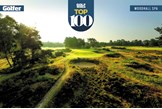 Woodhall Spa Golf Club's Hotchkin course.
Woodhall Spa Golf Club's Hotchkin course.
-
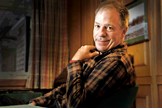 Golf course architect Tom Doak.
Golf course architect Tom Doak.
-
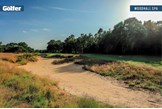 The 17th hole on Woodhall Spa Golf Club's Hotchkin course.
The 17th hole on Woodhall Spa Golf Club's Hotchkin course.
-
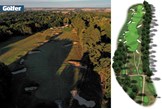 The par-5 18th on Woodhall Spa Golf Club's Hotchkin course.
The par-5 18th on Woodhall Spa Golf Club's Hotchkin course.
-
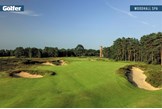 The 3rd hole on Woodhall Spa Golf Club's Hotchkin course.
The 3rd hole on Woodhall Spa Golf Club's Hotchkin course.
-
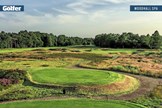 The 5th hole on Woodhall Spa Golf Club's Hotchkin course.
The 5th hole on Woodhall Spa Golf Club's Hotchkin course.
-
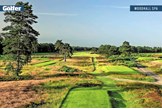 The 6th hole on Woodhall Spa Golf Club's Hotchkin course.
The 6th hole on Woodhall Spa Golf Club's Hotchkin course.
-
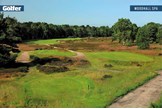 The 7th hole on Woodhall Spa Golf Club's Hotchkin course.
The 7th hole on Woodhall Spa Golf Club's Hotchkin course.
-
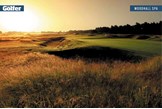 The 5th hole on Woodhall Spa Golf Club's Hotchkin course.
The 5th hole on Woodhall Spa Golf Club's Hotchkin course.
-
 Our scoring of Woodhall Spa's Hotchkin course.
Our scoring of Woodhall Spa's Hotchkin course.
